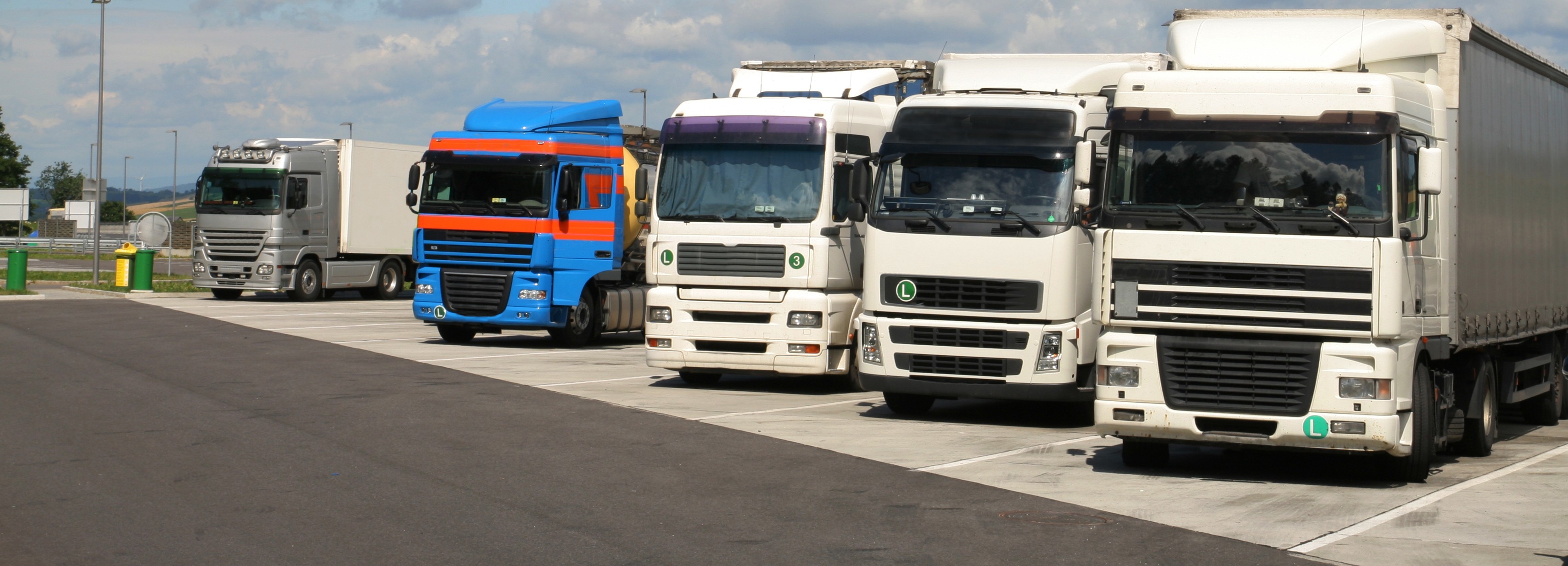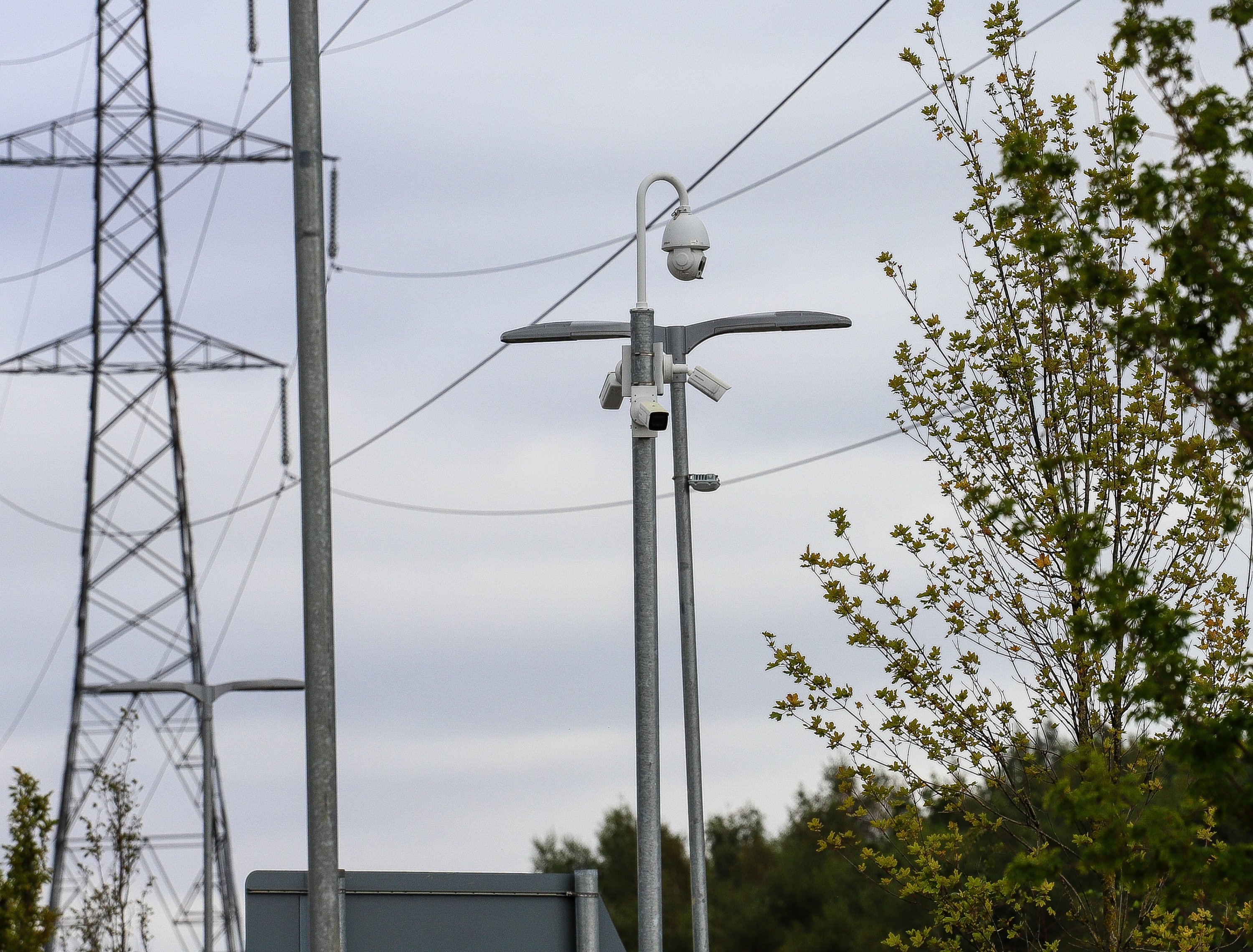
Miranda Blake
Co liczy się jako "bezpieczny parking dla ciężarówek"? Kierowcy zabierają głos
Utworzony: 09.12.2024
•
Aktualizacja: 09.12.2024
Jednym z największych wyzwań stojących przed kierowcami jest znalezienie bezpiecznego parkingu. Ankieta przeprowadzona przez organizacje branżowe wykazała, że wielu kierowców uważa, że poziom bezpieczeństwa na parkingach dla ciężarówek nie jest zadowalający.
Przyjrzyjmy się różnym aspektom, które przyczyniają się do bezpiecznego parkowania ciężarówek z perspektywy kierowców, badając podstawowe środki i udogodnienia. Ponadto przyjrzymy się ogólnemu środowisku, które sprzyja poczuciu ochrony.
Rola parkowania ciężarówek w logistyce
Kierowcy ciężarówek muszą parkować zgodnie z surowymi przepisami dotyczącymi okresów odpoczynku. Ponadto potrzebują miejsc, w których mogą odpocząć, zatankować paliwo i odświeżyć się bez [obawy o włamanie lub wandalizm] (https://snapacc.com/newsroom/tips-for-keeping-your-vehicle-secure-protecting-your-truck-from-theft/). Biorąc pod uwagę, że około 81% ładunków przewożonych jest transportem drogowym, zapotrzebowanie na bezpieczne parkingi dla ciężarówek ma kluczowe znaczenie dla sukcesu branży.
Nieodpowiednie środki mogą prowadzić do poważnych konsekwencji, w tym kradzieży ładunku, uszkodzenia pojazdu i obaw o bezpieczeństwo osobiste. Powoduje to, że [kierowcy często wyrażają frustrację] (https://snapacc.com/newsroom/drivers-unhappy-with-truck-stops-whats-the-problem/) - może to zniechęcać ich do robienia przerw i ostatecznie wpływać na ich wydajność na drodze.
Podstawowe środki
Podstawowym aspektem bezpiecznego parkowania ciężarówek jest wdrożenie fizycznych barier. Solidne ogrodzenie obwodowe ma kluczowe znaczenie dla zapobiegania nieautoryzowanemu dostępowi. Kontrolowane punkty wejścia i wyjścia, takie jak bramy wymagające dostępu za pomocą karty lub kodu, są koniecznością. Takie środki znacznie zmniejszają prawdopodobieństwo włamań i zwiększają ogólne bezpieczeństwo.
Niezbędne jest również skuteczne oświetlenie. Dobrze oświetlone obszary zniechęcają do działalności przestępczej i zapewniają kierowcom poczucie ochrony i pewność poruszania się po postojach ciężarówek, szczególnie w nocy.
Kolejnym ważnym aspektem jest kompleksowy nadzór wideo. Kamery CCTV powinny obejmować cały parking, umożliwiając ciągłe monitorowanie i rejestrowanie działań. Wielu kierowców ciężarówek docenia świadomość, że ich pojazdy i ładunek są pod całodobowym nadzorem, ponieważ może to okazać się skutecznym środkiem odstraszającym potencjalnych przestępców.
Obecność przeszkolonych pracowników ochrony stanowi dodatkową warstwę ochrony. Ochroniarze mogą szybko reagować na incydenty, udzielać pomocy i utrzymywać widoczną obecność, która zwiększa ogólne poczucie bezpieczeństwa. Kierowcy ciężarówek często czują się spokojniej, wiedząc, że na miejscu są profesjonaliści, którzy poradzą sobie z wszelkimi problemami, które mogą się pojawić.
Posiadanie łatwo dostępnych systemów komunikacji awaryjnej jest kluczowe - powinny być dostępne skrzynki alarmowe lub systemy interkomowe, które pozwalają kierowcom szybko skontaktować się z ochroną lub służbami kryzysowymi w razie potrzeby. W odległych obszarach, gdzie natychmiastowa pomoc może nie być łatwo dostępna, funkcja ta jest szczególnie istotna.

Dodatkowe funkcje
Czyste i dobrze utrzymane toalety i prysznice są również bardzo cenione, zwłaszcza podczas długich podróży. Środki powinny obejmować te obiekty, aby zapewnić, że są one zamknięte i pod nadzorem - nie tylko zwiększy to komfort kierowców, ale także przyczyni się do ich ogólnego poczucia bezpieczeństwa.
Choć nie jest to bezpośrednio związane z bezpiecznym parkowaniem ciężarówek, dodatkowe udogodnienia mogą znacznie poprawić ogólny komfort parkingu. Takie udogodnienia jak punkty gastronomiczne, dostęp do Wi-Fi czy podłączenie do prądu dla naczep chłodni sprawiają, że przestrzeń staje się bardziej przyjazna. Podstawowe usługi serwisowe mogą być również korzystne, umożliwiając kierowcom ciężarówek rozwiązywanie drobnych problemów bez opuszczania obiektu.
Tworzenie lepszego środowiska
Bezpieczny parking dla ciężarówek powinien również skutecznie dbać o kierowców. Wielu z nich przyznało, że w niektórych lokalizacjach czują się niedoceniani, co może negatywnie wpływać na ich doświadczenia. Te, które traktują kierowców ciężarówek z szacunkiem i zapewniają przyjazną atmosferę, zachęcają do ponownych wizyt i sprzyjają lojalności.
Inwestowanie w szkolenia personelu jest niezbędne do poprawy tej sytuacji. Pracownicy powinni rozumieć unikalne potrzeby kierowców ciężarówek i wiedzieć, jak zapewnić doskonałą obsługę klienta.
Rozwiązywanie problemów kierowców
Ważne jest, aby wiedzieć, że kobiety-kierowcy, które stanowią niewielki procent siły roboczej w transporcie ciężarowym, często stają przed dodatkowymi wyzwaniami związanymi z bezpieczeństwem. Wiele kobiet zgłasza, że czuje się niebezpiecznie w środowiskach zdominowanych przez mężczyzn, zwłaszcza gdy na postojach ciężarówek brakuje odpowiednich środków bezpieczeństwa - ważne jest, aby wziąć pod uwagę ich specyficzne potrzeby i podjąć kroki w celu zapewnienia im zarówno bezpieczeństwa, jak i zadowolenia.
Inną kwestią jest to, że niektórzy kierowcy ciężarówek mają specyficzne potrzeby żywieniowe. Dlatego też oferowanie zdrowej żywności i zaspokajanie różnych wymagań dietetycznych może poprawić ich doświadczenia i przyczynić się do pozytywnego samopoczucia kierowców.
Przyszłość bezpiecznego parkowania ciężarówek
Innowacje takie jak inteligentne systemy nadzoru, zautomatyzowane kontrole wjazdu i monitorowanie w czasie rzeczywistym mogą znacznie poprawić środki. Postoje ciężarówek, które inwestują w takie rozwiązania, mają większą szansę na przyciągnięcie większej liczby flot i kierowców, którzy szukają bezpiecznych opcji.
Sprostanie wyzwaniom w tym obszarze wymaga współpracy między różnymi zainteresowanymi stronami, w tym agencjami rządowymi, firmami logistycznymi i operatorami parkingów. Współpracując ze sobą, grupy te mogą opracować kompleksowe strategie mające na celu poprawę bezpieczeństwa i całego doświadczenia kierowców ciężarówek.
Popieranie zmian w polityce, które priorytetowo traktują potrzeby kierowców, ma kluczowe znaczenie dla tworzenia bezpieczniejszych środowisk. Organizacje branżowe i grupy rzeczników mogą odegrać znaczącą rolę w podnoszeniu świadomości na temat znaczenia bezpiecznego parkowania ciężarówek i naciskać na zmiany legislacyjne, które wspierają ulepszenia infrastruktury.
Znajdź bezpieczne usługi
W SNAP priorytetowo traktujemy bezpieczeństwo kierowców i pomagamy w tym parkom ciężarówek poprzez nasz dedykowany dział Access & Security. Od kamer i oprogramowania ANPR do terminali płatniczych do szlabanów do systemów wjazdowych do systemów kamer CCTV, wprowadzimy wszystko, aby jak najlepiej chronić kierowców ciężarówek, pojazdy i ładunek na postojach ciężarówek, MSA, zajezdniach flotowych i nie tylko.
Możesz dowiedzieć się więcej o SNAP Access & Security tutaj lub odkryć nasze inne usługi (takie jak parkowanie i mycie) na stronie SNAP.



